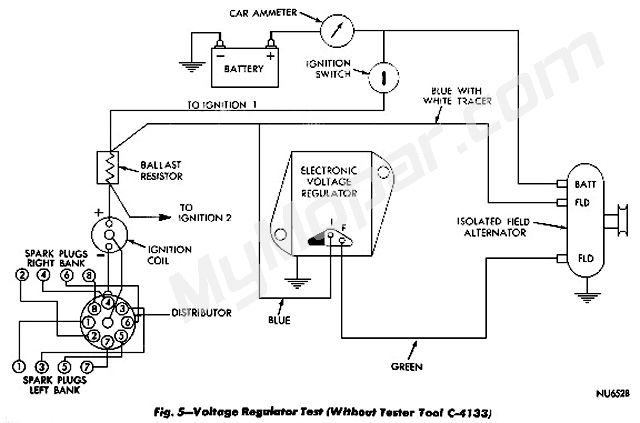ToastToAlmost
Well-Known Member
- Joined
- Aug 13, 2009
- Messages
- 58
- Reaction score
- 0
What would be the most likely cause for a car to charge around 14v at idle but jump to 15v with throttle? Wrong ohm ballast?
You didn't by chance put in one of those constant voltage race regulators?
if you read through the thread i posted ,there are links to step by step instructions for testing everything including the VRYes I did... but took it off due to some concerns and what I read here on FABO. See:
http://www.forabodiesonly.com/mopar/showthread.php?t=150015
Put on this one:
Amazon.com: Standard Ignition VR128 Volt Reg: Automotive
Standard Ignition VR128 Volt Reg solid state version
Is there a way to isolate and check the regulator??? Maybe I have a faulty item...?
the VR controls the charging output of the alt to the battery. i use black ,chrome ,orange boxes all with the same ballast. you just said you switched the VRI havent touched my vr. I did upgrade to the chrome box ecu though? Does that require a less ohm resistor? I just put in a new regulator and all of a sudden have same problem...
Is there a way to test regulator? anyone... thanks
if you read through the thread i posted ,there are links to step by step instructions for testing everything including the VR


Just spoke to 2fine69s and he gave me that link... gonna read it now. Thanks!
Good read at mad electrical about bypassing the amp guage and bulkhead connector I have two wires feeding the 12 volts into my Dart.
http://www.madelectrical.com/electricaltech/amp-gauges.shtml
i can say from experience that 67dart273 is the man that gave me all the links and helped me get my mess sorted out. my duster was overcharging and having major issues. after going through the bypass surgery lol and following links posted in the thread i gave you guys the link to, my car is running great and still working the way it is supposed to.Thanks for all the input, I'm gonna read through everything you guys posted and start troubleshooting in the morning. Before I came in I did decide to check the battery, and it only has 12.4V when the car is off. Is there a chance the VR is just trying to get my battery up to 12.6+?
I swear the grounds are good. It was charging at 14V with the old ECU at my gauge in the car, but that thing isn't too accurate, and I haven't checked it with the meter in a while, so I don't know if it was happening for a while with the old ECU or not. All I did was put in the chrome box and a new wiring harness, and checked it with the meter to make sure it was all good, and that's when I noticed the 15V when applying throttle.
it may not but if you have it wired incorrectly it does. My 4 post ballast was upside down from a conversion to electronic. Almost drove me crazy until I checked ohms against diagram and figured out it was hooked wrong. I would charge right at idle then in driving it would start going up to over 18. Swapped it around and has been fine since.ballast resistor has nothing to do with the charging system
